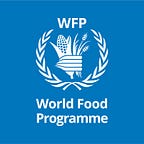“Now we have plenty of food to eat”
Meet Chansouk — a role model for healthy eating in Laos
Chansouk admits that several years ago she was shy and quiet. She didn’t have the courage to share her opinions or ideas in public.
She is a member of the Oman ethnic group in Phongsaly province, Laos. In her community, men have a voice, she said, while women are voiceless and don’t take the lead on making decisions.
In 2017, Chansouk was among the first to volunteer to become a Village Facilitator for the World Food Programme’s (WFP) Farmer Nutrition Schools (FNS) programme, that supports pregnant and breastfeeding mothers and children under two years to eat more nutritious diets. Less than two years later she is one of the most effective and confident facilitators.
Before, I had no confidence at all because I could not speak Lao clearly, and I was shy. Now, I have more confidence which enables me to speak in public.’
‘’As an ethnic Oman, we did not have any information about what nutrition is or how to eat a proper diet. We ate only what we could find from the forest. Some seasons, we used to eat only bamboo or mushrooms,” she said.
A changing diet and growing confidence
WFP’s Farmer Nutrition School encourages families to change the way they think about and eat food. It counters detrimental food and feeding taboos and encourages pregnant and breastfeeding mothers to eat healthier, more diverse and nutrient-rich diets so they and their children can stay healthy.
Facilitators like Chansouk are trained and encouraged to share their knowledge with others in their community. And this includes supporting women to grow crops that will help them to meet their nutritional needs.
By adding a diverse range of fruits and vegetables to their meals, families in Chansouk’s village are one step closer to reducing hunger and malnutrition, including her own.
Today, she has her own garden where she is planting plenty of vegetables. She also raises animals such as chickens and pigs to meet her protein needs. In addition, she has invented many different kinds of food processing and preservation techniques which she has shared with her community.
“Now we have plenty of food to eat. We don’t have to walk 2–3 hours and spend the day in the forest because our garden is just two minutes away from home. When we get sick, we go to the health center and encourage our midwives to give only breast-milk to the babies until they 6 months old,’’ she says.
No longer shy and quiet, Chansouk is already planning how she can support even more women. She wants to share her farming and nutrition knowledge with women in nearby villages so that they and their families can create a new way of eating and growing food.
Read more about WFP’s work in Laos
Story written by Vilakhone Sipaseuth
